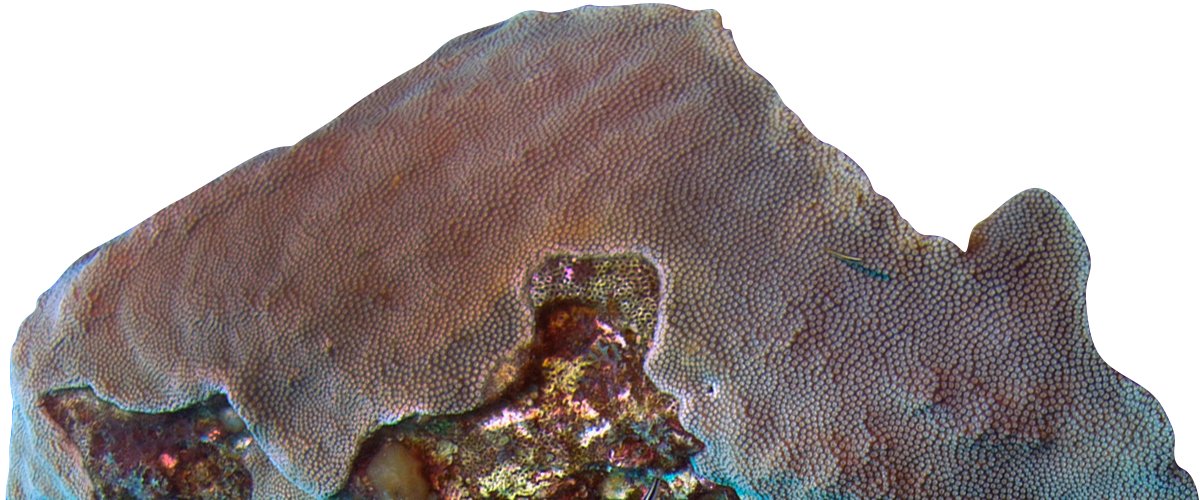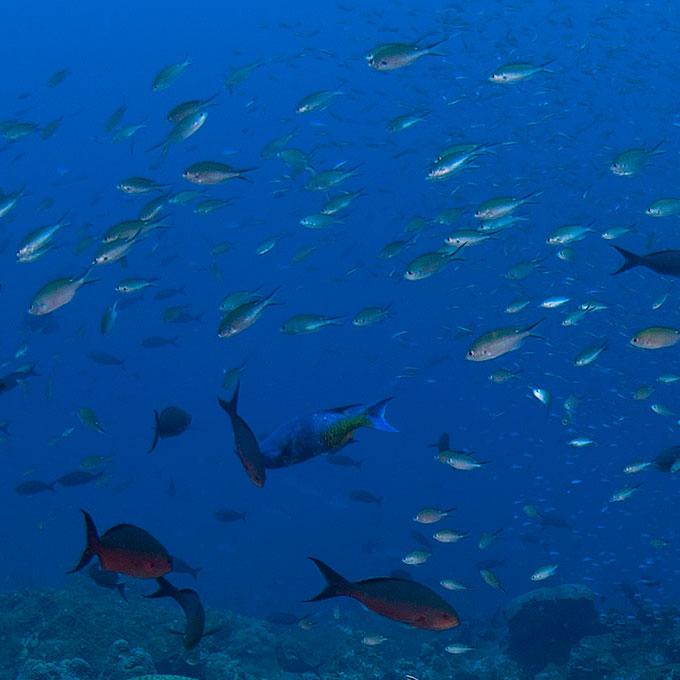Biodiversity in the Gulf of Mexico

Coastal habitats are under a variety of man-made and environmental pressures that put the biological diversity of these unique ecosystems at risk. The Gulf of Mexico's coastal ecosystems do not escape this reality, and are currently exposed to the effects of climate change, exploitation of resources, dumping, and the constant risk of habitat modification by the creation of coastal infrastructures. The opening of the offshore oil industry in Mexico to foreign companies also threatens the biodiversity of sensitive Mexican coastal environments.
It is imperative to know the actual state of these ecosystems in the south of the Gulf of Mexico to compile reference information and establish present conditions of marine biodiversity of the these ecosystems. The knowledge of the diversity, abundance and distribution of species is the base for developing conservation projects and preserving its natural resources for ecological, economic and cultural purposes. This lack of knowledge about Gulf biodiversity also prevents us from understanding the connectivity between the northern and southern Gulf fisheries. Unfortunately, there are a number of challenges to successfully cataloging and educating the public about biodiversity, including a severe lack of qualified Mexican professionals on less charismatic but crucially important marine invertebrate reef fauna, a lack of outreach material to support biodiversity and environmental education across the Gulf of Mexico in Spanish and English and a complete non-existence of data on several marine invertebrate species groups.
HRI has a long history of research into the biodiversity of the Gulf of Mexico, including the publication of “Gulf of Mexico: Origins, Waters and Biota, Volume 1: Biodiversity" by Texas A&M University Press in 2009. Created through a comprehensive inventory conducted by Harte Research Institute (HRI) for Gulf of Mexico Studies, the project brought a team of 140 taxonomists from 80 institutions in 15 countries together to compile biodiversity data that had been previously scattered across the world. Information was pulled from scientific collections in museums, research institutions, private collections and personal observations and updated based on the most recent studies accepted by experts. HRI later went on to transform that enormous nearly 1,400 page text into Biodiversity of the Gulf of Mexico (BioGoMx), a searchable database of more than 15,000 living species found in the Gulf of Mexico. The goal was to make data on the rich biodiversity of the Gulf more readily available to researchers, students and the general public. Each species page also features photos, conservation status, range maps and contact information for “people in the know.” There are plans to update BioGoMx's design and function in the near future.
The goal of the current 3-year "Biodiversity in the Southern Gulf of Mexico" project is to provide knowledge on marine macrofauna of the southern sector of the Gulf of Mexico, with emphasis on coastal areas and reefs of the Campeche Bank. These ecosystems are facing man-made and environmental pressures, while the biodiversity of life in these areas is still understudied. This project aims to focus collection efforts to remote regions of which we know little or nothing at all, and the material collected will be cured and processed to expand diversity inventories and support Mexico's biodiversity agency (CONABIO) in increasing their databases on southern Gulf of Mexico marine species diversity, ecology and distribution. The project will also help to train future Mexico biodiversity experts and will produce high-quality public outreach materials in both Spanish and English to foster education of biodiversity. Expanding our knowledge of the biodiversity in these remoter regions of the southern Gulf of Mexico will generate biodiversity knowledge to better manage and mitigate potential negative impacts from the recently expanding offshore Mexico oil industry, and increase our understanding of the southern Gulf's influence into the northern Gulf of Mexico biodiversity and fisheries.

